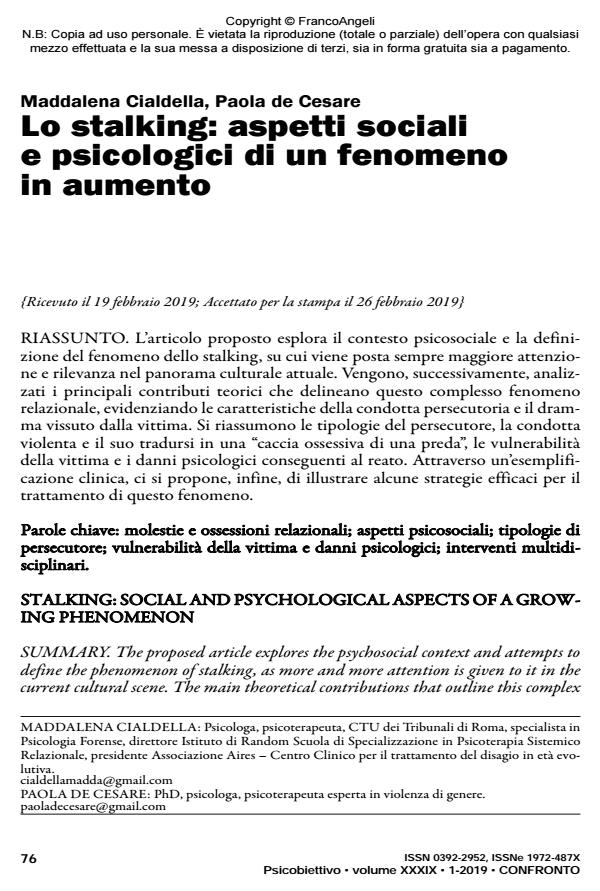Stalking: social and psychological aspects of a growing phenomenon
Journal title PSICOBIETTIVO
Author/s Maddalena Cialdella, Paola de Cesare
Publishing Year 2019 Issue 2019/1
Language Italian Pages 13 P. 76-88 File size 148 KB
DOI 10.3280/PSOB2019-001007
DOI is like a bar code for intellectual property: to have more infomation
click here
Below, you can see the article first page
If you want to buy this article in PDF format, you can do it, following the instructions to buy download credits

FrancoAngeli is member of Publishers International Linking Association, Inc (PILA), a not-for-profit association which run the CrossRef service enabling links to and from online scholarly content.
The proposed article explores the psychosocial context and attempts to define the phenomenon of stalking, as more and more attention is given to it in the current cultural scene. The main theoretical contributions that outline this complex relational phenomenon are analyzed, highlighting the characteristics of the conduct of a persecutory activity and the trauma experienced by the victim. The article then proceeds to summarize the types of persecutors, the violent conduct and its translation into an "obsessive hunt for a prey", the victim’s vulnerabilities and the psychological damage created by the crime. Through a clinical exemplification, we propose some effective strategies for the treatment of this phenomenon.
Keywords: Harassment and Relational Obsessions; Psychosocial Aspects; Types of Persecutors; Vulnerability of the Victim and Psychological Damage; Multidisciplinary Interventions.
Maddalena Cialdella, Paola de Cesare, Lo stalking: aspetti sociali e psicologici di un fenomeno in aumento in "PSICOBIETTIVO" 1/2019, pp 76-88, DOI: 10.3280/PSOB2019-001007